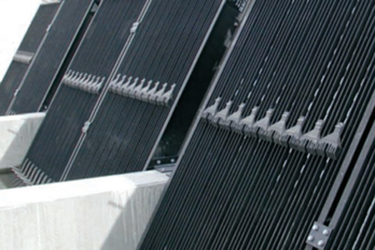Self-Cleaning Trashracks Offer Flow Protection For High Volumes And A Wide Variety Of Debris

Trashracks serve the simple but critical purpose of keeping large debris out of a water system. They are often placed in high-volume channels, drainage canals, pump stations, or flood control systems. Whether the goal is to pull water out of a residential area or supply water to a hydroelectric plant or a nuclear facility, it is critical to ensure that the water doesn't carry potentially damaging debris into the system beyond the screen.
In areas with harsh environments, such as those prone to heavy rainfalls or hurricanes, or even just those with a lot of vegetation, a trashrack can become clogged, causing potential flooding or preventing flow when it is needed. There are a variety of ways to handle this — trashracks can be cleaned manually or with third-party machinery. For many applications, a self-cleaning trashrack (SCT) can be an ideal solution. SCT systems offer key benefits that can save money while ensuring a continuous flow of water with minimal debris, protecting downstream equipment.
Get unlimited access to:
Enter your credentials below to log in. Not yet a member of Water Online? Subscribe today.
